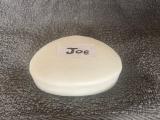I guess that most people have already converted to LED for lighting and are already saving money on their electricity bills but I just wanted to give a word of warning. Not all LED lights are created equally.
Most lights come with two ratings. Wattage and Lumens. Wattage is the amount of power the light uses. You will often see an info box on the packaging that says x Watts and then y units per 1000h. I'm looking at a GU9 LED replacement right now which is about 2.7W, or roughly 3kWh (units) per 1000 hours. Looks great as I am replacing a 25W halogen lamp. But...the lumens, or amount of light is only 300 lumens. Or a shade over 100 lumens per watt.
That's an energy rating of E. Which is not the best rating in the world, but about as good as it gets in GU9 format.
A pack of 5 LAP brand from Screwfix cost me £16.99 so about £3.40 a bulb. 10000h life.
Bell make a similar bulb. 3W but only 200 lumens so less lumens per watt. Exactly the same price. Energy rating F. 20000h life.
Crompton make a 2.5W bulb but at only 210 lumens, or 84lumens/watt. That's a G rating, but it is only £2.50. But also only 6000h life.
Philips make a 2W version at 220 lumens, or 110 lumens per watt, so rating E, but at nearly £6 ago, is more expensive. 15000h life.
I've not found GU9 rating D or higher.
So, LED saves money compared with old fashioned bulbs, but they do vary wildly by efficiency and price.
You need to do the sums on lumens, Watts, price and hours. It seems that the Screwfix jobbies have the best bang per buck, in my opinion, for GU9. For a similar bulb that lasts twice as long, the Bell looks ok, but will use more power over it's lifetime for less light output. That 0.3W over 10000 hours equates to 3kWh, or about another £1.05 in electricity.
Regular ES or BC light bulbs have a much wider spread of energy ratings. Some cheaper supermarket or pound shop specials are really dire, compared to 'branded' bulbs, and rarely manage their rated lifespan.
You pays your money and takes your choice.
Last edited by retrotecchie; 03-11-22 at 19:26.
Don't shoot me, I'm only the piano player. I DON'T work for or on behalf of EON.Next, but am willing to try and help if I can. Not on mains gas, mobile network or mains drainage. House heated almost entirely by baby dragons.




